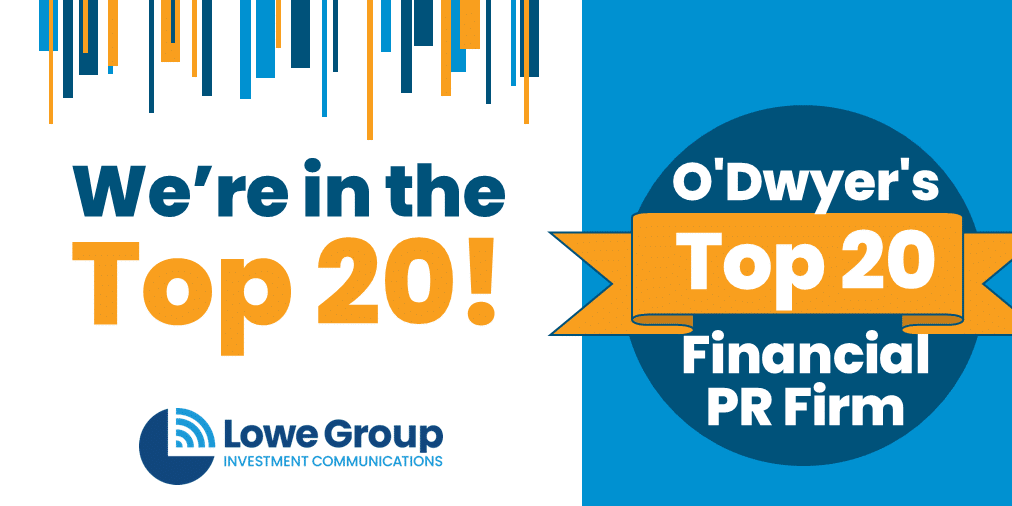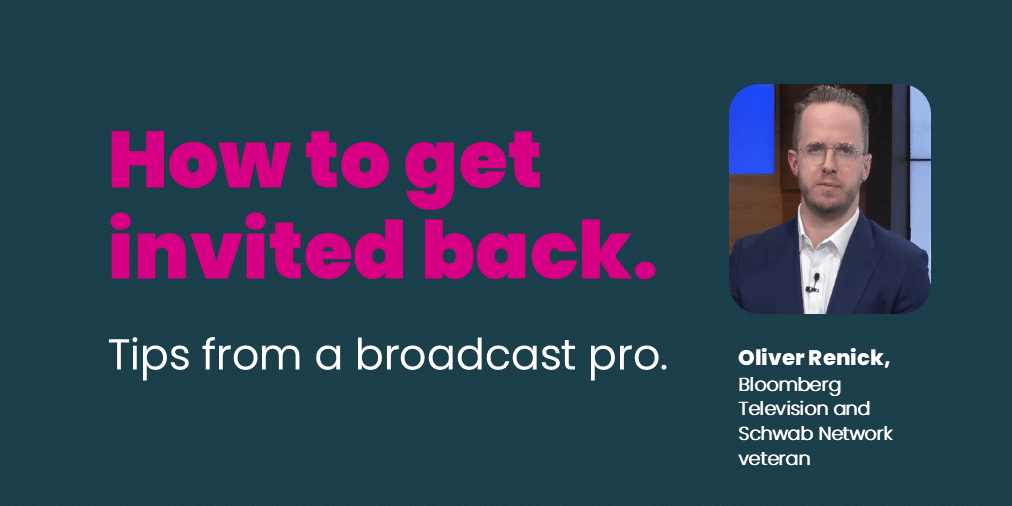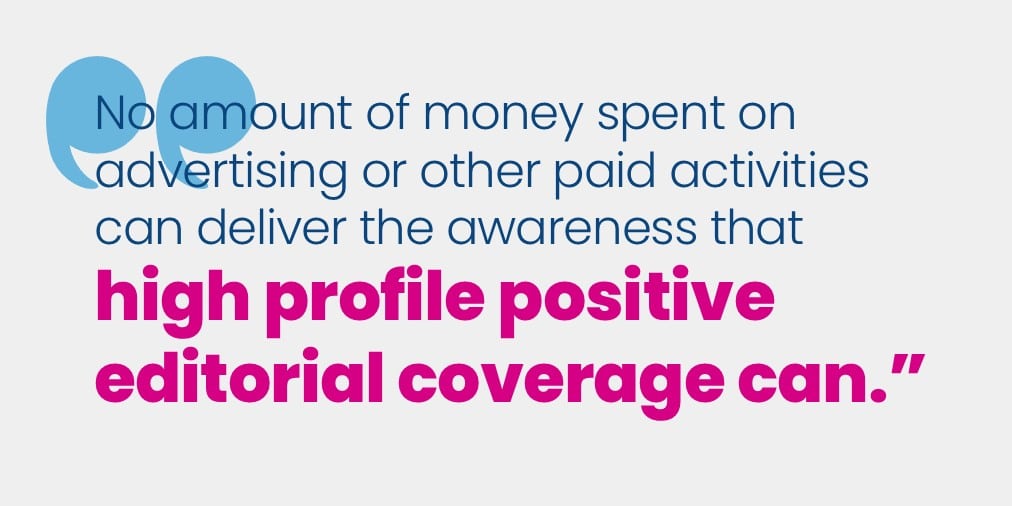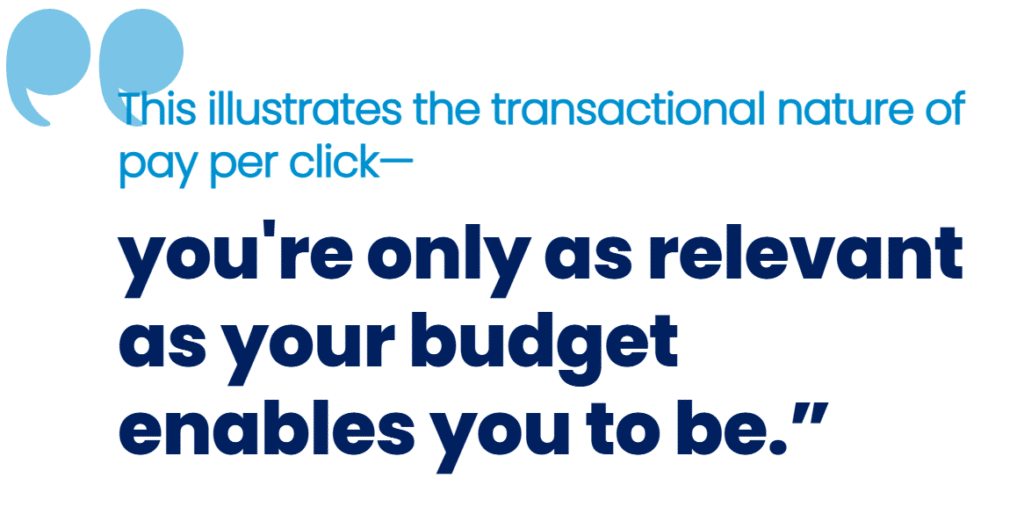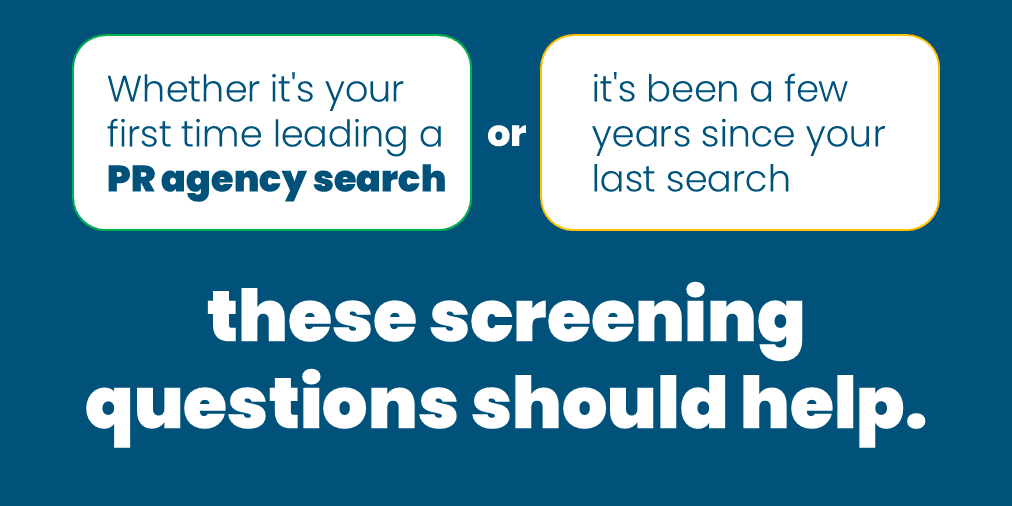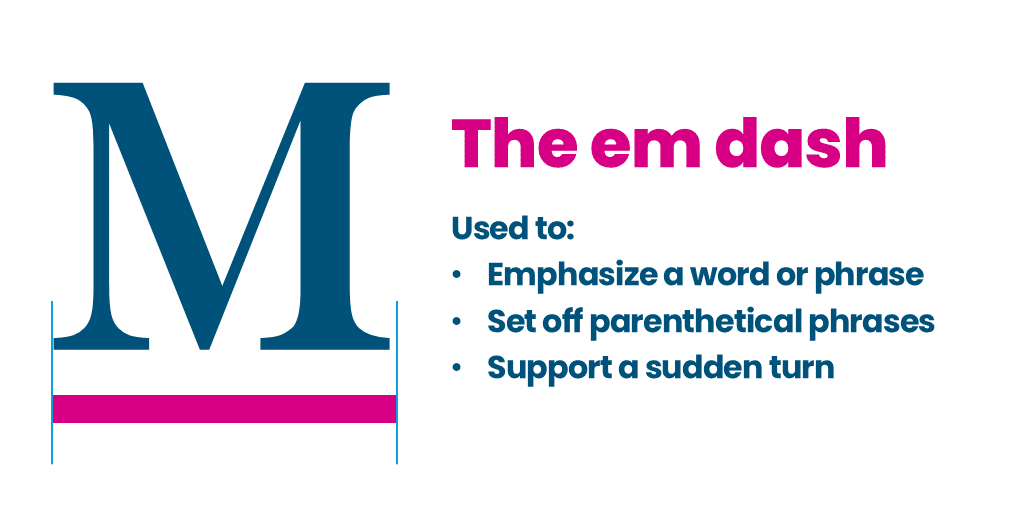LoweDown Blog.
Insights on issues impacting the investment industry.
The Latest
Lowe Group breaks into top 20 financial PR agencies
While helping clients go further, faster, Lowe Group climbs in O’Dwyer’s 2025 ranking of financial public relations agencies.
Oliver Renick’s tips for standing out in financial TV interviews
See the Bloomberg Television and Schwab Network veteran’s suggestions for a media appearance that will get you invited back.
Morningstar conference regains its mojo
Last year’s kinks worked out, MICUS 2025 delivered good energy, presenters and Exhibit hall.
Earned media: The PR workhorse of visibility for ETFs, other investment products and services
Key takeaways: Earned media includes coverage or attention your firm gets that is not paid Research shows earned media is viewed as more credible than…
Paid search offers visibility benefits, even as costs rise and habits shift
For how long will it be a go-to tactic, especially for long tail searches?
Prepping your asset management website for a whole different kind of user
It’s time to consider a future when our clients and prospects will send their AI agents to get what they need from our sites.
How to hire the right financial PR firm: 7 critical questions for asset managers to ask
Experience, media relationships, familiarity with compliance, tight collaboration with digital marketing all matter most.
We stand with the em dash
Used by Buffett, Marks, Zweig, Benz and others, the dash doesn’t deserve to be cancelled over a silly misunderstanding.
AI tools for financial PR, digital marketing: 5 takeaways from Office Hours
ChatGPT, Claude Sonnet 3.7, and Jasper.ai all discussed by Office Hours panelists and guests.
AI is changing financial PR…for the better
Matching the right journalist and sharpening the pitch, with help from the large language models, has never been easier.
Subscribe.
Receive the latest
LoweDown blog posts.
